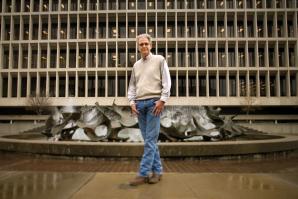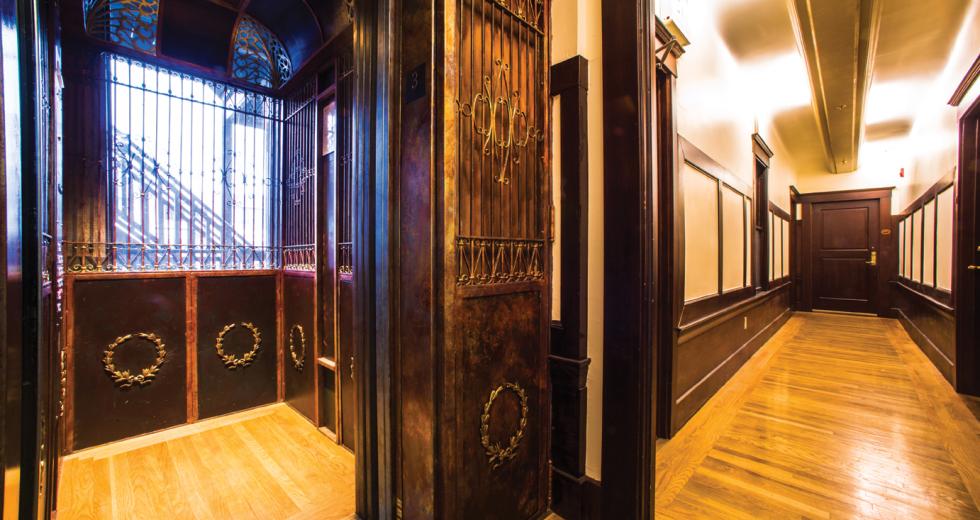Burke Fathy isn’t sure whether the building that housed Sacramento’s first Police Department will be converted to offices or apartments, but, as the managing partner of Sutter Capitol Group, he is sure the original architectural elements will stay. From the marble staircase to the bullet holes, Fathy and other regional developers and investors like him are convinced that history sells.
“It’s a landmark for good reason,” says Fathy of the historic 1916 structure. “It’s architecturally significant. There’s a unique value in that because it is not just another commodity, and investors are drawn to that,” despite the added costs.
Fathy and other developers who specialize in renovating historic sites say the projects’ appeal goes beyond the spreadsheets. Historic remodels bring out the artist, architect and archeologist inside developers as they attempt to save the past while creating modern uses.
Chris Pendarvis spent three years renovating a 1917 Oak Park building into the sharp new Henry Arthur’s Supper Club and Ruby Room on Broadway. It required shoveling years of decay and neglect aside just to uncover what he had left to work with.
“I kind of felt the building when I saw it,” he says. “Then, after you fall in love with it, the project becomes an obsession.
But these projects aren’t indulgences that defy the basic laws of profit and loss. They’re typically much more expensive than renovations to modern properties, and costs increase with the amount of damage left behind, seismic retrofits and improvements to plumbing and air systems.
The destruction of the vintage Alhambra Theater to make room for a modern supermarket in the late 1960s was the fuse that lit a political campaign to save historic buildings in Sacramento. The city adopted its first historic preservation building codes in 1976 and added a Historic and Cultural Element to its general plan in 2000. There are now close to 1,000 buildings designated as historical landmarks throughout 31 design districts covered by the plan, according to Roberta Deering, the city’s preservation director.
“They document what made Sacramento what it is throughout its diverse history,” she says. “They reflect the influence of a city growing up at the confluence of two rivers, the railroad, the canning industry and post-World War II development.”
The city codes, as well as historic preservation standards from the California’s Division of Architecture and the federal government, do not require restoration down to the last detail. Instead, they offer guidelines for developers to follow to preserve the essential historic character of a designated building and to consult with local preservation experts while conforming to contemporary desires and safety codes.
The Elks Tower in downtown Sacramento is a classic example of how craftsmanship can be jeopardized for the sake of profit. Considered one of Sacramento’s most prestigious architectural gems, the building was originally constructed in the 1920s as a private club with apartments, parlors, a swimming pool and other semi-public gathering spots. No expense was spared.
But in the 1970s, much of the ornate interior was destroyed or buried by a new owner anxious to capitalize on a hot office market. “It was done as inexpensively as possible,” says Peter Dannenfelser, principle of Architectural Arts in Sacramento. Historic windows were covered. Hand-sculpted decorative elements were broken or drilled through. “They did great damage to the building,” he says.
Working from a second-story office that was once a women’s parlor, Dannenfelser is now a “restorer in residence” at the Elks Tower, carefully overseeing restoration and remodeling projects. “I feel responsible for the previous architect’s work, and I feel fortunate that I can work with local artisans to replicate it,” he says.
Renovations and tenant improvements to historic properties are far more complicated than those that occur within newer properties because there are so many more considerations.
“As with most buildings, the intent is to make money, so everything is more of a challenge and a matter of degree when you decide how carefully you will recreate what was there,” Dannenfelser says.
These are hands-on jobs that require some old-school craftsmanship and know-how from a modern work force.
“You can’t just send a crew out to the site unsupervised,” says Bay Miry, whose family-owned firm D&S Development specializes in refurbishing historic buildings throughout midtown, including the Artists Loft project at 14th and R streets and the Maydestone apartment building on J Street. “Fortunately, there are members of our team that have extra skills. As they work, all of a sudden you see all the details brought out.”
“And there is definitely a demand for historical buildings,” he says. “The feel of community satisfaction and benefit is tangible, and it’s true even in something as small as a taco stand.”
He’s referring to Tako, a Korean barbecue at Alhambra and T streets that looks like the Atlantic Richfield gas station it was in 1936. Situated on an odd-shaped lot, the building was constructed out of a bolt-together kit and had been abandoned for decades when Miry got a hold of it.
With the help of local historians and preservation experts, the station’s original colors and design were recreated while the building was modernized to accommodate a kitchen.
“We’ve spoken to a lot of the neighbors, and they say it has added new life to the neighborhood,” Miry says.
The 32-unit Maydestone apartment building, rehabbed by D&S Development into affordable housing after it was gutted by a fire, was another community boon. It incorporates the most contemporary, energy-efficient and environmentally sustainable technology. Yet, with built-in hutches and Murphy beds, steam radiators and one of the oldest elevators this side of the Mississippi, the building has retained its original 1912 charm.
“It added housing to the city’s grid to make up for so much of what was lost when Sacramento lost so much to suburbanization and many historic buildings were torn down,” Miry says.
Like any real estate development, historic projects still have to fit with the rest of the community. Fathy believes his project will add some spark to the city.
“I’ve lived in other places on the East Coast, but my partners and I are all natives of Sacramento, and we believe downtown can grow into a more urban environment and mixed-use residential is really critical to that,” he says.
Pendarvis, meanwhile, says shoveling dump trucks of neglect out of his building and preserving the historical touches were worth the time and expense.
“It would have been easier to tear it down and build something new, and it would have been cheaper,” he says. “But the reward is in owning something that is unique and 108 years old.”
Recommended For You

Halls of Justice
Crumbling courthouses create construction opportunities
Since the founding of our state, courthouses have been the focal point of many communities. They are at once tangible symbols of the rule of law, monuments to our democratic ideals and the primary point of contact between the citizens and the judicial system. And, they are all but falling apart.

Fresh Fruit
A Sacramento landmark is ripe for revitalization
With ground set to break on an entertainment and sports complex said to include state-of-the-art technology, owners of Downtown Plaza’s next-door neighbor, the California Fruit Building, have a high-tech makeover plan of their own.



